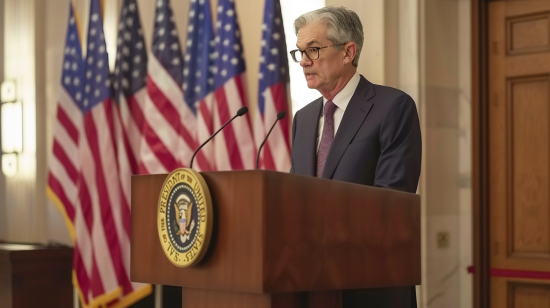| Key Points: – Core PCE Index rose 2.6% year-over-year in June, unchanged from May. – Three-month annualized inflation rate fell to 2.3% from 2.9%. – Economists anticipate the Fed may signal a September rate cut at next week’s meeting. |
The Federal Reserve’s preferred inflation gauge, the Personal Consumption Expenditures (PCE) Index, showed signs of stabilization in June, potentially paving the way for a rate cut in September. This development has caught the attention of economists and market watchers alike, as it could mark a significant shift in the Fed’s monetary policy.
According to the latest data, the core PCE Index, which excludes volatile food and energy prices, rose 2.6% year-over-year in June. While this figure slightly exceeded economists’ expectations, it remained unchanged from the previous month and represented the slowest annual increase in over three years. More importantly, the three-month annualized rate declined to 2.3% from 2.9%, indicating progress towards the Fed’s 2% inflation target.
Economists are divided on the implications of this data. Wilmer Stith, a bond portfolio manager at Wilmington Trust, believes that this reinforces the likelihood of no rate movement in July and sets the stage for a potential rate cut in September. Gregory Daco, chief economist at EY, anticipates a lively debate among policymakers about signaling a September rate cut.
However, the path forward is not without challenges. Scott Helfstein, head of investment strategy at Global X ETFs, cautioned that while the current outcome is nearly ideal, modestly accelerating inflation could still put the anticipated September rate cut in question.

The Fed’s upcoming policy meeting on July 30-31 is expected to be a crucial event. While traders widely anticipate the central bank to hold steady next week, there’s growing speculation about a potential rate cut in September. Luke Tilley, chief economist at Wilmington Trust, suggests that while the data supports a July cut, the Fed may prefer to avoid surprising the markets.
Fed Chair Jerome Powell’s recent comments have added weight to the possibility of a rate cut. In a testimony to US lawmakers, Powell noted that recent inflation numbers have shown “modest further progress” and that additional positive data would strengthen confidence in inflation moving sustainably toward the 2% target.
Other Fed officials have echoed this sentiment. Fed Governor Chris Waller suggested that disappointing inflation data from the first quarter may have been an “aberration,” and the Fed is getting closer to a point where a policy rate cut could be warranted.
As the Fed enters its blackout period ahead of the policy meeting, market participants are left to speculate on how officials might interpret the latest PCE data. The steady inflation reading provides the Fed with more time to examine July and August data before making a decision on a September rate cut.
The upcoming Fed meeting will be closely watched for any signals about future rate movements. While a July rate cut seems unlikely, the focus will be on any language that might hint at a September adjustment. As Bill Adams, chief economist for Comerica, noted, the June PCE report is consistent with the Fed holding rates steady next week but potentially making a first rate cut in September.
As the economic landscape continues to evolve, the Fed’s decision-making process remains under intense scrutiny. The balance between controlling inflation and supporting economic growth will undoubtedly be at the forefront of discussions as policymakers navigate these uncertain waters. The coming months will be crucial in determining whether the Fed’s cautious approach to rate cuts will be validated by continued progress in taming inflation.
